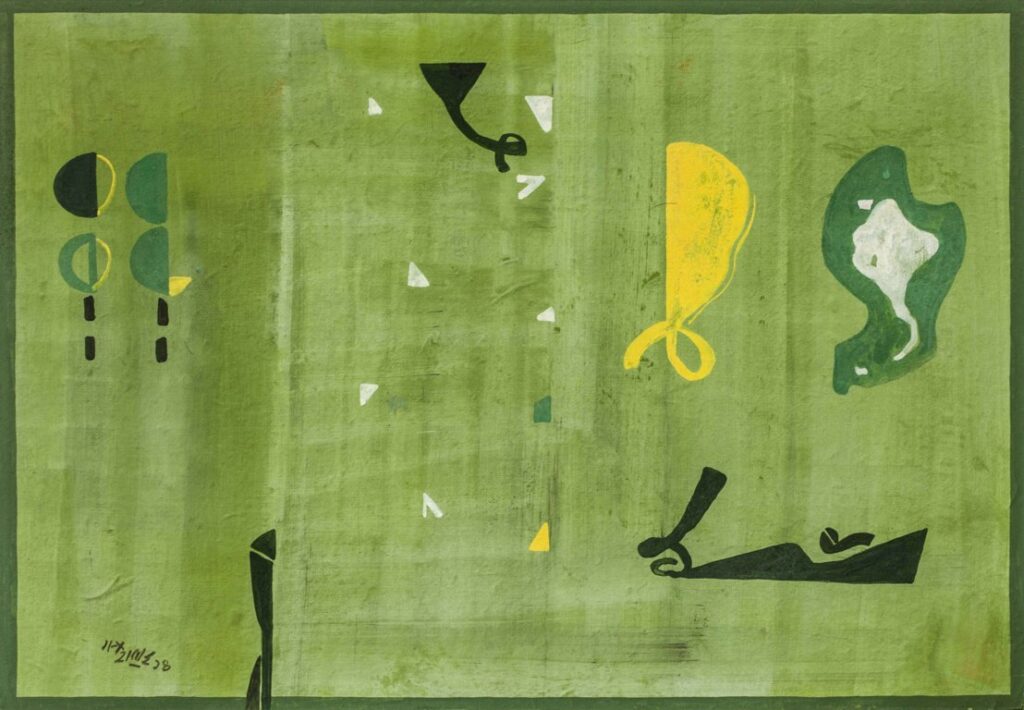Ganesh Haloi
(b. 1936)
Born on the banks of the Brahmaputra in Jamalpur, Mymensingh, now in Bangladesh in 1936, Ganesh Haloi moved to Kolkata in 1950 following the partition of India. The trauma of the uprooting left its mark on his work as it did on some other painters of his generation. Haloi has a very strong sense of oneness with nature, especially landscape, one of his deepest source of inspiration. He merge with the landscape that he loses his own identity; there is no sense of alienation for him. “My feelings and affection are here. The mountains, the people playing folk songs on the banks, I do not think it is something separate from me. I am not apart from the landscape”, he says.
On the walls of Ganesh Haloi’s drawing-dining room hangs a painting resonating with the ornate artistic style of Ajanta, and thereby hangs a tale. In the late 1950’s, when he was assigned to reproduce the frescoes of Ajanta by the Archaeological Survey of India, Haloi was mesmerized by the magnificent murals of Visvantara Jataka, the lotus motifs, mandalas, apsaras, demons and deities painted on the ancient cave walls. The work traces a memory of those early times, restrained and reined in; luminous veins hint at the more decorous forms and colours that gave his early works their vitality and life. The experience of Ajanta influenced Haloi profoundly. His work was marked by lyricism and worked in many mediums and initially painted figures in landscapes. The mood was was inevitably poignant. Gradually, Haloi moved towards landscapes. A sense of nostalgia for a lost world pervaded these paintings. Eventually, Haloi turned to abstract renderings of landscapes. Dots, dashes, lines became cryptic signs for trees, water, green fields. A refreshing interlude came when Haloi did some architectural paintings after a tour of the ruins of Gour Pandua in north Bengal. Haloi has done a number of commissioned mosaic murals. His stint at Ajanta led him to study Buddhism, do research and publish a paper on the ‘Techniques of Ajanta Murals’ in the journal of Art in Industry in 1964.




